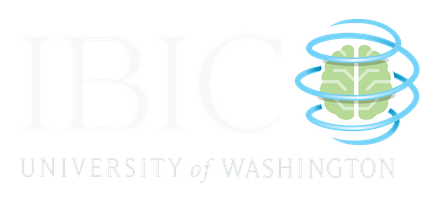
Integrated Brain Imaging Center
Imaging Understanding
Research Scientist
Email
I am technical supervisor of the human electrophysiology laboratory jointly operated by the Integrated Brain Imaging Center (IBIC) and the Center for Human Development and Disability (CHDD). This lab houses both an Electrical Geodesics Inc. (EGI) high-density EEG system (like the one I used at Smith-Kettlewell) and a BIOPAC psychophysiology acquisition system. In 2012, following construction of new IBIC lab space (available to CHDD affiliates), I procured and installed a new EGI Geodesic EEG System 300, and coordinated the upgrade of their Geodesic Photogrammetry System. I helped install and configure IBIC's MR-compatible EEG system from Brain Vision. I also procured and installed a new BioSemi high-density EEG recording system for the Psychology Department, and supervise its operation.
As technical director of these labs, I consult with investigators on design of experiments; implement stimulus delivery software; train new users to prepare participants and to test and operate the recording apparatus; and implement software for database management and processing/analysis of collected data. My general strategic goal has been proper coordination of interoperable solutions that allow investigators to select the recording apparatus that is optimal for the needs of their participants, without concern for any impact on offline analysis capability.
I have devoted most of my professional career to the engineering of scientific computing software and data processing infrastructure. I have extensive experience in nearly every aspect of scientific computing related to the study of EEG and vision, including stimulus delivery, statistical analysis, signal-processing, visualization, data warehousing, and user interface design. In collaboration with experts in functional neuroimaging, I helped to develop high-density EEG source estimation techniques optimized for high productivity in large scale research studies. That project specifically concentrated on the pioneering use of fMRI-defined regions of interest from visual cortex to constrain the estimated sources of precise frequency components evoked by tightly controlled visual stimulation. One of my notable achievements during that effort was the creation of an analysis software environment that automated the accumulation and manipulation functional, anatomical, and source estimation data created by disparate software tools. Studies previously limited by tedious manual data processing pipelines to just one or two test subjects can now be scaled up to much larger groups of participants, thus making clinical studies combining high-density EEG and functional imaging more feasible.